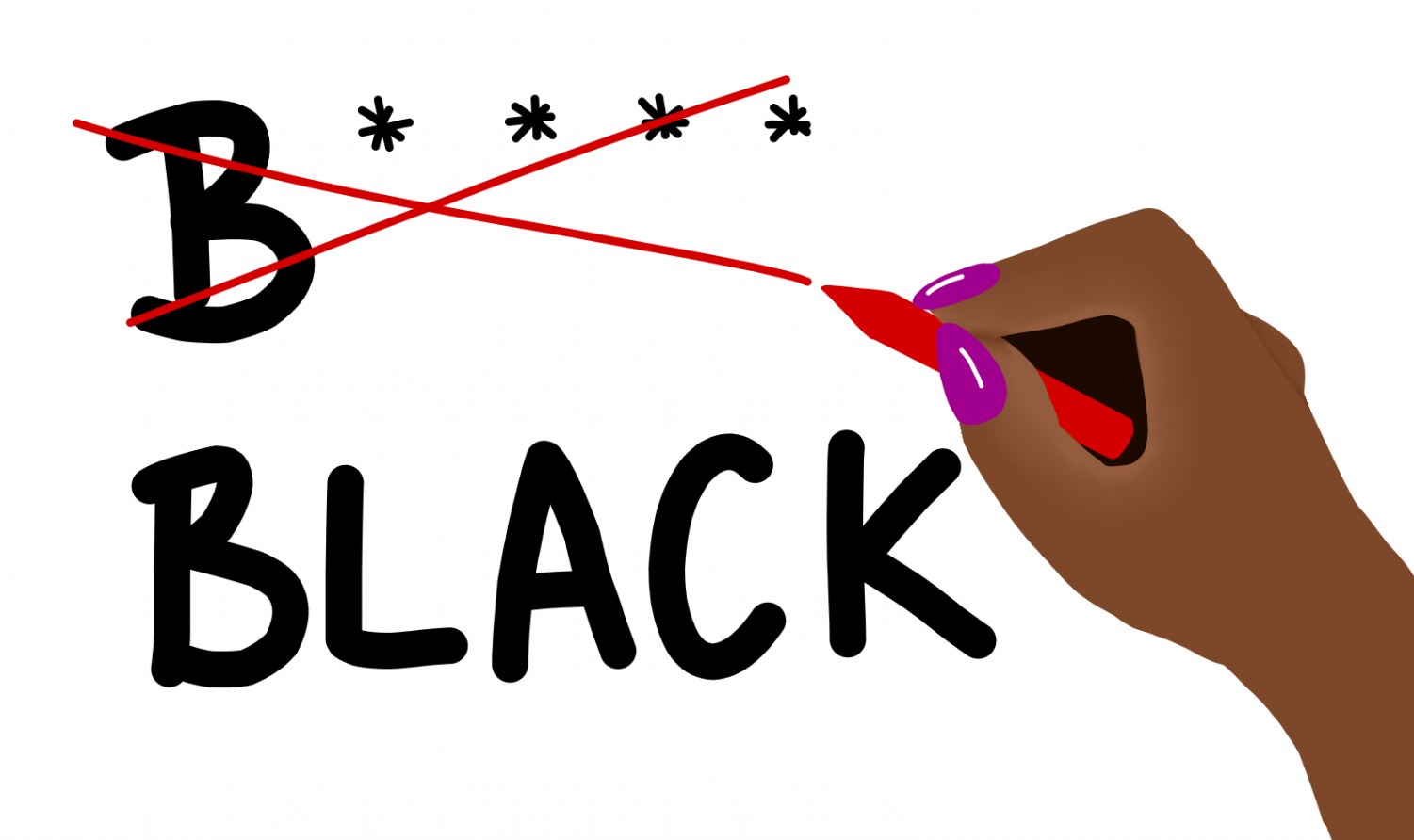Opinion | Black is not a bad word


Black History Month is starting and I would like to bring attention to that fact, but more attention to the fact that Black is okay — the word, the color and the people. People do not need to feel uncomfortable referring to Black people as Black. It is often preferred to refer to Black people as Black because POC is not inclusive to Black issues and was created to undermine the Black experience.
To begin, let me announce that I am Black. Blackitty Black. I have to hold my ears down when getting my hair combed — Black. I have no issues with being called dark or African-American, but I prefer Black, and there is nothing wrong with that. Growing up, people made me feel like I had to be ashamed for being Black and having darker skin, but there is nothing to be ashamed of. I just produce a great amount of melanin, and I am grateful for that. Black has a bad rep, and I am here to clear its name.
Black has been used with weak symbolic representation that contributes to its association with badness. When we think of people being morally corrupt, we say that their soul is blackened. In shows or movies, they often depict the evil characters dressed in black or dark colors. We could use Disney as a case study — Maleficent, Ursula, Cruella de Vil, even Scar are all dressed in black or have black features. We are socialized to think that black is bad, sorrowful even — this is why at funerals everyone dresses in black. Studies have shown that it’s gotten to the point that people ascribe darker skin to a higher likeliness of committing violence. This phenomenon is called the “bad is black” effect. Not only is it problematic, but it is harmful towards Black people because it characterizes a feature they cannot control as a social opposition, aggression.
We need to begin to challenge this association between color and emotion, especially for black. I believe Alain Badiou does a great job of challenging our beliefs in his book “Black: The Brilliance of a Non-Color.” In the book, Badiou makes a point that contradicts our perceived notion of black being corrupt.
“Scientists confirm it: black is not a color … There’s no light, there’s no color … Black is passive negation … [while white is] the combined, confused sum of all possible colors. Black is the absence of color, while white is the impure mixture of all the colors,” Badiou writes.
This perspective challenges everything we know. The way in which Badiou pursues color suggests that black is pure, while white is confused and impure. Now imagine being socialized to think this way. Whiteness would be associated with impurity and confusion. Would you value any scholar who was white if you were conditioned to believe that they were confused? You may give them a chance after decades of corrections, but there will always be a subconscious bias that exists and would affect being hired at a job or getting into university. Perhaps this perspective awakens you to the daily experience of Black people.
It is important to examine the origin of discomfort for Black people. With identity politics in mind, people try not to use any language that may get them “cancelled.” Thus, they avoid trigger words that are sensitive to backlash. Instead of saying Black, they will say African American. Although African American may sound academically and politically correct and appraised, it can be incorrect. There are Black people who are not American. Also, the generalized use of “African” has to do with slave “culture” and the inability to trace the lineage of enslaved persons. There are people who know where they are from and have strong roots in their culture. Not only is it simply inaccurate to refer to them as African American, but it excludes the Black Experience. Being Black doesn’t rely on the origin of Black you are, but the collective affairs that Black people endure.
Now with Black Lives Matter trending, the confusion between using Black and African American is excluding members from this necessary conversation. Since Black Lives Matter is based in the United States, some felt as if it was an American issue and started saying African American Lives Matter. However, this was leaving out the voices of people experiencing police brutality outside of America. To use African American is to be nation-specific and, in the case of BLM, it doesn’t recognize the problem outside of America. This is why we emphasize Black. Black is inclusive to all people of African descent.
Many people think of Black as a bad or dirty word. It is this discomfort that brought about the phrase “People of Color,” or POC. “People of Color” is meant to be endearing and emphasize the existence of non-white people across the board. The problem is that there are Black issues which are exclusive to Black people. There are also some POC who condone Anti-Black racism. “People of Color” does not work when referring to Black people. People need to get over themselves. Their discomfort is muffling Black issues.
All in all, I want people to be more comfortable with using Black. I want people to know Black. I want people to love Black. As I stated before, it is not bad or something to be ashamed of, Black is okay. Black is beautiful.
If you would like to learn more about his topic, you can find an informative Twitter thread here.
Ajani Powell writes about social influences and Black culture. Contact them at ajp168@pitt.edu.
Recent Posts
SGB addresses concerns about ICE presence on campus, hears SJP lawsuit against administration, approves governing code bill
At its weekly meeting on Tuesday at Nordy’s Place, Student Government Board heard concerns about…
ACLU of Pennsylvania sues Pitt over SJP suspension
The ACLU of Pennsylvania filed a federal civil lawsuit against the University of Pittsburgh and…
Marquan Pope: The ultimate shark
One of the most remarkable things about sharks is that an injury doesn’t deter them.…
Who Asked? // Do we really get a summer vacation?
This installment of Who Asked? by staff writer Brynn Murawski mourns the seemingly impossible perfect…
Notes From an Average Girl // Notes from my junior year
In this edition of Notes From an Average Girl, senior staff writer Madeline Milchman reflects…
Meaning at the Movies // The Power of the Movie Theater
In this edition of “Meaning at the Movies,” staff writer Lauren Deaton discusses her love…


